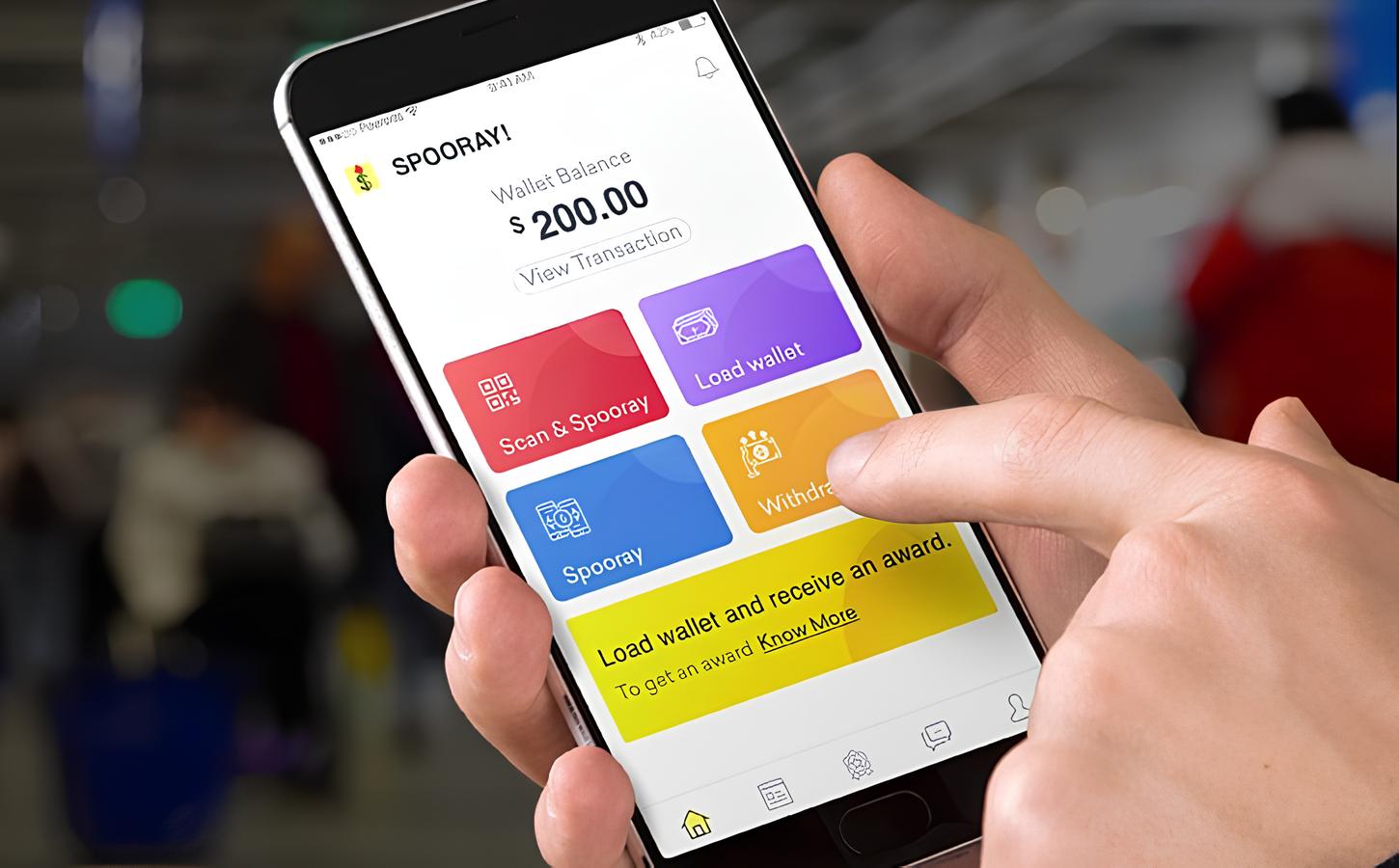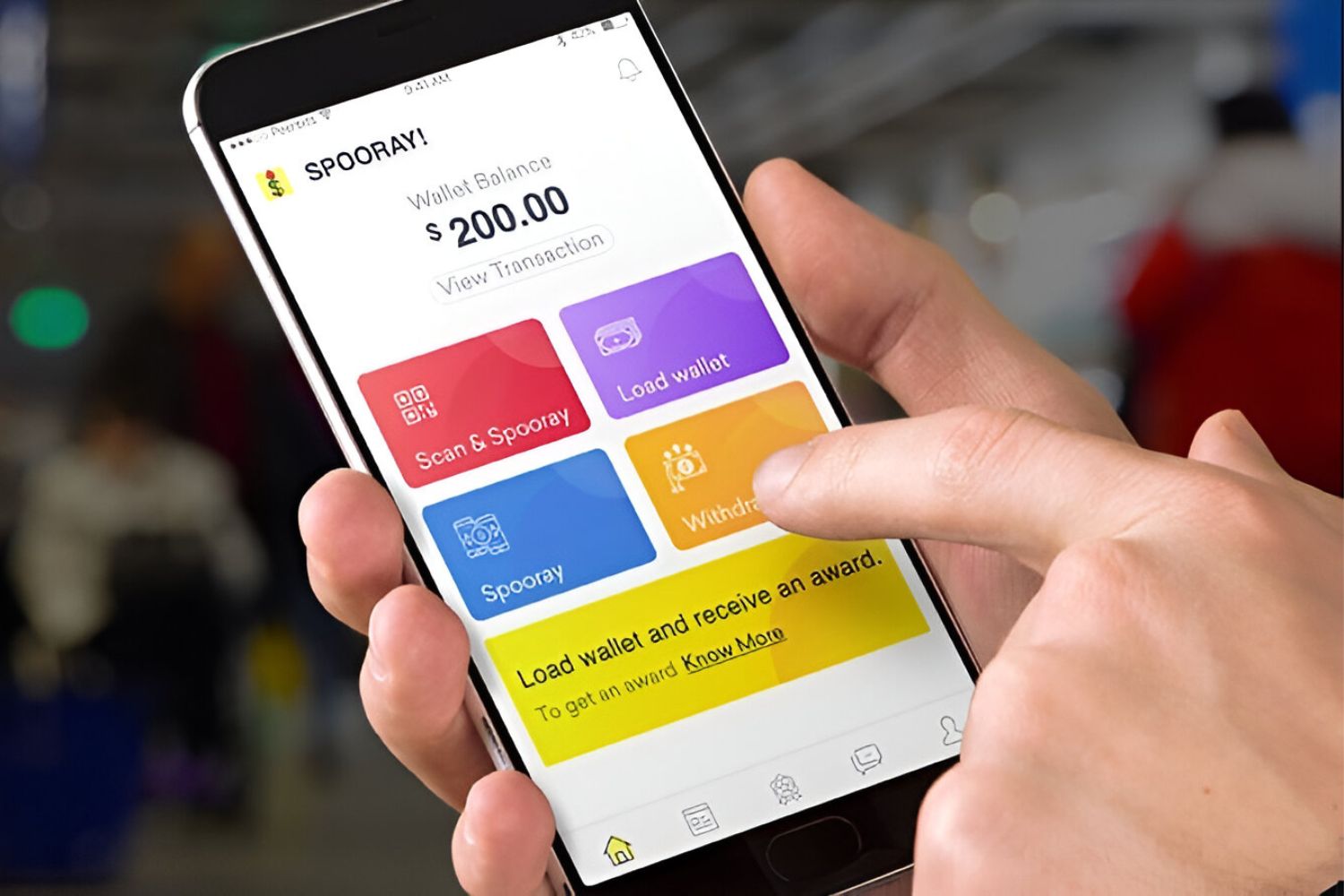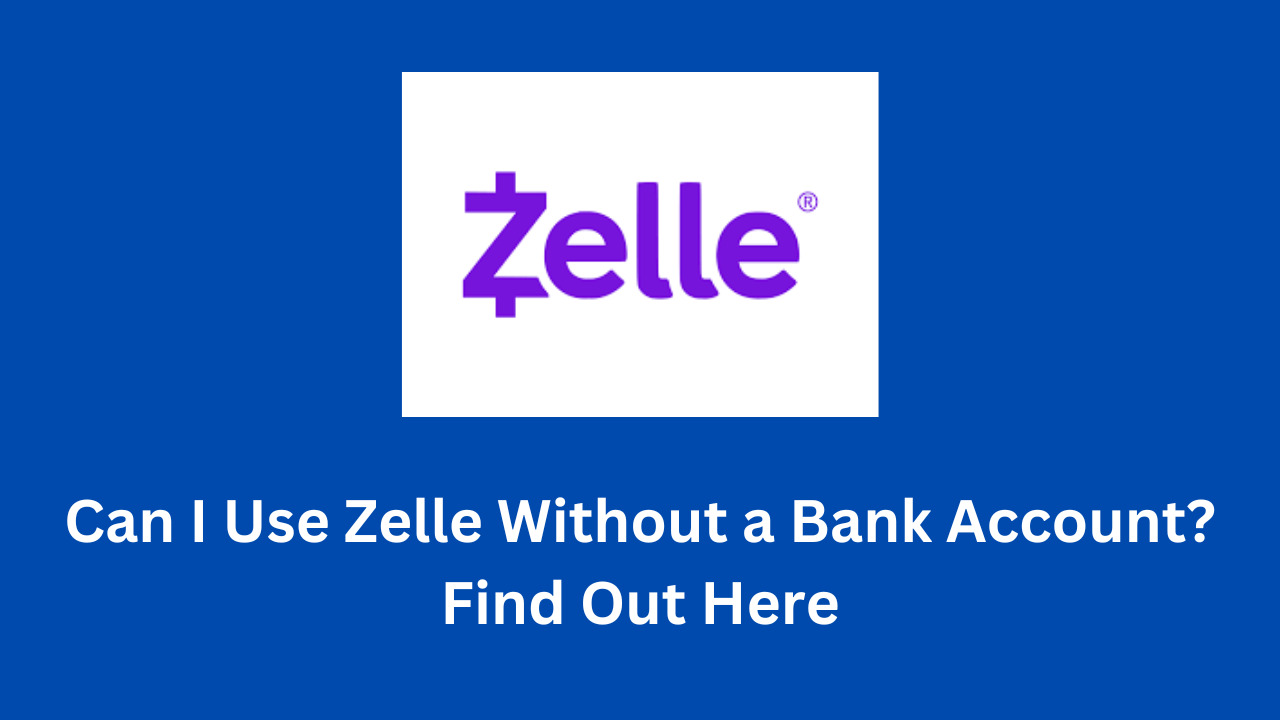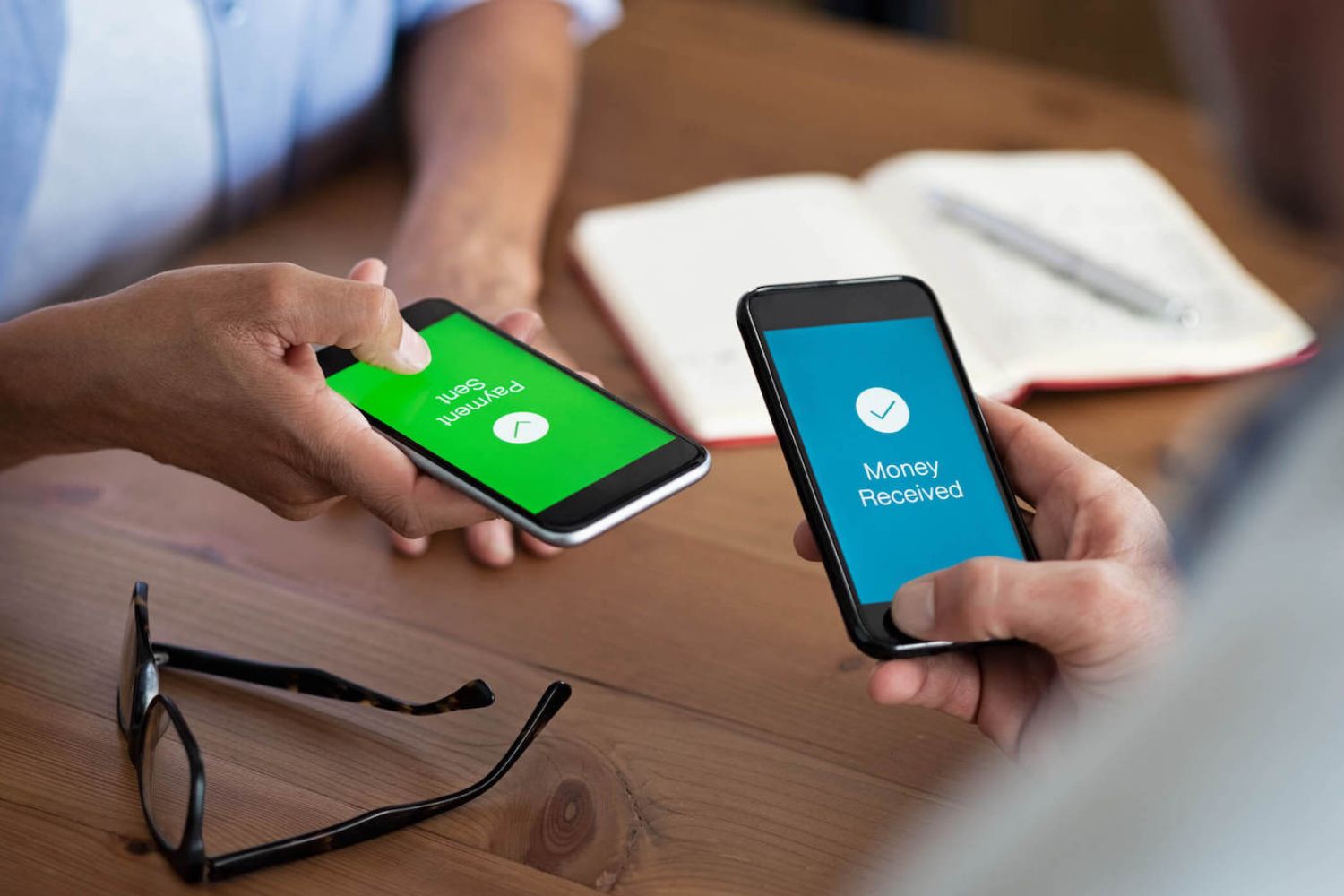Introduction
Welcome to the world of peer-to-peer (P2P) payment apps! With the rise of mobile technology, P2P payment apps have become increasingly popular as a convenient and fast way to transfer funds between individuals. Whether you want to split the bill with friends, send money to family members, or pay your share of the rent, these apps offer a seamless and hassle-free solution.
So, what exactly is a P2P payment app? At its core, it is a mobile application that facilitates the transfer of money from one person to another using a digital platform. Instead of relying on traditional banking methods or physical cash, these apps leverage technology to make the process quick, secure, and efficient.
One of the main attractions of P2P payment apps is their simplicity and ease of use. With just a few taps on your smartphone, you can send, receive, and track payments in real-time. No more fumbling for exact change or dealing with the complexities of traditional banking systems. P2P payment apps have revolutionized the way we handle money transactions, making it easier than ever to split expenses, pay back debts, or even make charitable donations.
While there are several P2P payment apps available in the market, each with their own unique features and advantages, choosing the right one can be a daunting task. Factors such as security, user experience, cost, and compatibility with various platforms should be taken into consideration.
In this article, we will explore the world of P2P payment apps, highlighting their key features, discussing the technologies involved, and providing insights into the crucial considerations to keep in mind when building your own app. Whether you are an entrepreneur venturing into the fintech industry or simply curious about the inner workings of these apps, this guide will provide you with a comprehensive overview to help you make informed decisions.
So, buckle up and get ready to dive into the exciting world of P2P payment apps, where seamless transactions and financial convenience await!
Understanding P2P Payment Apps
P2P payment apps have revolutionized the way we handle money transactions, making it convenient and hassle-free to transfer funds between individuals. But how do these apps work? And what sets them apart from traditional banking methods?
At their core, P2P payment apps utilize technology to facilitate the transfer of money from one person to another. They eliminate the need for physical cash or checks and allow individuals to make instant payments using their smartphones. These apps act as intermediaries, securely connecting users’ bank accounts, credit cards, or digital wallets to ensure smooth transactions.
One of the key advantages of P2P payment apps is their simplicity and ease of use. Most apps require users to create an account, link their payment methods, and add contacts or phone numbers to initiate transactions. Once set up, users can send and receive funds with just a few taps on their screens. Whether you want to split a restaurant bill, chip in for a group gift, or pay your share of the rent, P2P payment apps offer a convenient solution that eliminates the need for physical currency.
One of the main features that sets P2P payment apps apart from traditional banking methods is the ability to make instant transfers. Instead of waiting for checks to be deposited or funds to be cleared, P2P payment apps enable immediate transactions. This makes them ideal for situations when you need to send money urgently, such as emergencies or time-sensitive payments.
Another advantage of P2P payment apps is their accessibility. Most apps are available for download on both iOS and Android devices, meaning users can easily access and manage their funds regardless of their mobile operating system. Additionally, many P2P payment apps offer web-based platforms, allowing users to send and receive payments from their desktop or laptop computers.
Safety and security are paramount when it comes to financial transactions, and P2P payment apps take this seriously. They employ various security measures, such as encryption, two-factor authentication, and secure login credentials, to ensure that users’ personal and financial information is protected. However, it is essential for users to take their own precautions, such as using strong passwords and keeping their app updated, to further enhance security.
Overall, P2P payment apps have transformed the way we handle money transactions, offering convenience, speed, and accessibility. Whether you use them for personal or business purposes, understanding how P2P payment apps work can empower you to make the most of these innovative financial tools.
Key Features of a P2P Payment App
When it comes to P2P payment apps, there are several key features that set them apart from traditional banking methods and make them popular among users. These features enhance convenience, security, and accessibility, making the process of transferring funds between individuals seamless and efficient.
1. User-Friendly Interface: A well-designed and intuitive user interface is crucial for a P2P payment app. Users should be able to navigate the app easily, understand its features, and initiate transactions with minimal effort. Clear and concise labeling, easy access to contacts, and straightforward payment initiation are all important factors to consider when designing the interface.
2. Contact Integration: P2P payment apps often provide the functionality to sync contacts from the user’s phone, making it easy to identify and select recipients for payments. This eliminates the need to manually enter phone numbers or email addresses and simplifies the process of initiating transactions to individuals in the user’s contact list.
3. Instant Transfers: One of the major benefits of P2P payment apps is the ability to make instant transfers. Users expect their funds to be transferred quickly, often within seconds, so implementing a robust and efficient payment processing system is crucial. Integrating with payment gateways and leveraging technologies such as real-time payment systems can ensure prompt and seamless transactions.
4. Transaction History and Tracking: Keeping track of past transactions is vital for both senders and recipients. A P2P payment app should provide users with a comprehensive transaction history, detailing the date, time, and amount of each payment. This not only helps users keep a record of their financial activities but also allows for easy reference and reconciliation.
5. Security Measures: Security is of utmost importance in any financial application, and P2P payment apps are no exception. Implementing robust security measures, such as encryption, two-factor authentication, and secure login credentials, can help protect users’ personal and financial information from unauthorized access. Additionally, offering features like fingerprint or facial recognition for authentication adds an extra layer of security.
6. Splitting Bills and Requesting Money: P2P payment apps often provide the ability to split bills among multiple users or request money from others. This feature simplifies the process of dividing expenses and facilitates easier money collection from friends or acquaintances. Users can specify the amount owed by each individual and quickly settle shared expenses.
7. Notifications and Alerts: To keep users informed about their financial activities, P2P payment apps should send timely notifications and alerts. This can include notifications when payments are received, when a payment is pending, or even reminders for overdue payments. These notifications help users stay on top of their financial obligations and ensure a smooth payment experience.
By incorporating these key features, P2P payment apps provide users with a seamless and convenient way to transfer funds. Understanding these features is essential for app developers and business owners looking to create their own P2P payment app or enhance an existing one.
Choosing the Right Technology
When it comes to building a P2P payment app, choosing the right technology stack is crucial. The technology you select will determine the app’s performance, security, scalability, and overall user experience. Here are some key considerations to keep in mind when selecting the technology for your P2P payment app:
1. Mobile Platform: One of the first decisions you’ll need to make is whether to build a native app for iOS, Android, or both. Consider your target audience and their preferred devices. Building a native app allows for better integration with the platform’s features and provides a smoother user experience.
2. Backend Development: The backend of a P2P payment app is responsible for handling transactions, authentication, and storing user data securely. Consider using a framework or technology that supports scalability, high performance, and security. Popular backend technologies for mobile app development include Node.js, Ruby on Rails, and Django.
3. Database Management: The database plays a crucial role in storing and retrieving user information and transaction data. Choose a database management system that offers reliability, scalability, and data security. Options include SQL databases like MySQL or PostgreSQL, or NoSQL databases like MongoDB or Cassandra.
4. Payment Gateway Integration: To facilitate secure and seamless transactions, you need to integrate with a reliable payment gateway. Consider the supported currencies, transaction fees, security protocols, and ease of implementation when selecting a payment gateway. Popular options include Stripe, PayPal, and Braintree.
5. Security Measures: Security is paramount when handling financial transactions. Implement strong encryption protocols and necessary security features, such as two-factor authentication and secure login credentials. Stay updated on the latest security practices to protect user information and prevent fraudulent activities.
6. APIs and Third-party Integrations: Consider leveraging existing APIs and third-party integrations to enhance the functionality of your P2P payment app. This can include integration with social media platforms for easy contact syncing, SMS or email verification services for user authentication, and identity verification APIs for enhanced security.
7. User Interface Design: The user interface (UI) of your app plays a significant role in attracting and retaining users. Choose a frontend technology that enables you to create a visually appealing, intuitive, and responsive UI. Popular frontend frameworks include React Native, Flutter, and Swift for iOS development.
Ultimately, the technology stack you choose should align with your project requirements, budget, and development team’s expertise. Consider the long-term scalability and maintainability of the chosen technology, as well as the ease of future updates and enhancements to keep up with evolving user needs.
Analyze your project needs, consult with your development team, and stay updated on industry trends to make informed decisions when selecting the technology for your P2P payment app. The right technology stack will ensure a robust and reliable app that meets user expectations and drives success in the highly competitive fintech market.
Security Considerations
When it comes to P2P payment apps, ensuring the security of users’ sensitive financial information is of paramount importance. Users rely on these apps to handle their money transfers, and any security vulnerabilities can have serious consequences. Here are some crucial security considerations to keep in mind when building and maintaining a P2P payment app:
1. Data Encryption: Implement strong encryption protocols to protect users’ personal and financial data. Utilize transport layer security (TLS) or secure socket layer (SSL) for encrypting data in transit. Additionally, encrypt sensitive user information at rest, such as bank account details or credit card numbers, within your app’s databases.
2. Authentication and Authorization: Implement robust authentication methods to ensure that only authorized users can access the app. Utilize secure mechanisms such as two-factor authentication (2FA), biometric authentication (fingerprint or facial recognition), or strong password policies. Properly authenticate users during login and whenever sensitive actions, such as initiating a transaction, are performed.
3. Secure API and Backend: Secure your app’s APIs and backend systems to prevent unauthorized access or tampering. Utilize secure communication protocols and ensure that APIs have proper authentication and authorization mechanisms in place. Regularly monitor and update API security to protect against potential vulnerabilities.
4. Regular Security Audits: Conduct regular security audits of your app and backend systems to identify and address any potential security weaknesses. Hire external security professionals or firms to perform penetration testing and vulnerability assessments. Regularly update and patch any known security vulnerabilities to maintain a strong security posture.
5. Fraud Prevention and Monitoring: Implement fraud detection and prevention mechanisms to identify and block any suspicious or fraudulent activities. Utilize machine learning algorithms and pattern recognition to proactively monitor for fraudulent transactions or unauthorized account access. Enable users to report suspicious activities and have a robust system in place to investigate and resolve such reports.
6. Compliance with Regulations: Ensure that your app complies with relevant financial regulations, data protection laws, and privacy policies. Stay up-to-date with legal and regulatory requirements, such as Payment Card Industry Data Security Standard (PCI DSS) compliance, to protect user data and maintain trust in your app.
7. User Education: Educate your users about best security practices and provide clear guidelines on how to protect their personal and financial information. Encourage the use of strong passwords, enabling biometric authentication, and regular account monitoring. Promptly notify users of any security updates or breaches and provide guidance on protective actions they can take.
By prioritizing security and implementing robust measures, you can instill trust and confidence in your users. Regularly review and improve your app’s security measures to stay ahead of emerging threats and ensure the protection of sensitive user data within your P2P payment app.
Design and User Experience
Design and user experience (UX) play a crucial role in the success of a P2P payment app. A well-designed app with a seamless user experience can attract and retain users, while a poorly designed app may result in frustration and abandonment. Here are some key considerations for designing an intuitive and user-friendly P2P payment app:
1. Simple and Intuitive Navigation: Make sure the app’s navigation is logical and intuitive. Users should be able to navigate through various features and screens easily, without confusion. Utilize clear labels, icons, and visual cues to guide users throughout their payment journey. Keep the app’s interface clutter-free and remove any unnecessary steps or complex processes.
2. Clear and Concise Messaging: Use concise and user-friendly language throughout the app to provide clear instructions and guidance. Avoid technical jargon and complex terms that may confuse users. Use plain language to explain features, actions, and error messages, ensuring that users understand what they need to do at every step.
3. Responsive Design: Ensure your app is designed with a responsive layout that adapts to different device sizes and orientations. Users should be able to access and use your app seamlessly on both smartphones and tablets. Consider various screen sizes, resolutions, and aspect ratios to deliver a consistent user experience across different devices.
4. Visual Appeal: Employ a visually appealing and consistent design language throughout the app. Use a cohesive color scheme, typography, and visual elements to create an attractive and memorable app interface. Consider your target audience and incorporate visual elements that resonate with their preferences and expectations.
5. Streamlined Registration and Onboarding: The registration and onboarding process should be quick and easy for new users. Minimize the number of required fields and use smart defaults or autofill options to speed up the process. Offer a guided onboarding experience that highlights the app’s key features and benefits, while allowing users to skip or personalize as needed.
6. Seamless Payment Flow: The payment flow should be straightforward and hassle-free. Ensure that users can easily input payment details, select recipients, and confirm transactions. Use clear progress indicators and visual cues to inform users about the status of their payments and any pending actions.
7. Error Handling and Support: Design robust error handling mechanisms to provide users with clear and helpful error messages when something goes wrong. Offer support channels, such as in-app chat, email, or phone support, to assist users with any issues they may encounter. Consider integrating a comprehensive help section or FAQ to address common user queries.
8. Testing and Iteration: Regularly test your app’s design and user experience with real users, gathering feedback and insights to identify areas for improvement. Conduct user testing sessions to observe how users interact with the app, uncover pain points, and make necessary adjustments. Iterate on the design based on user feedback to constantly refine and enhance the user experience.
By focusing on design and user experience, you can create a P2P payment app that is visually appealing, easy to navigate, and enjoyable to use. Putting user needs and preferences at the forefront can differentiate your app in a competitive market while driving user satisfaction and retention.
Building the Backend Infrastructure
The backend infrastructure of a P2P payment app is the foundation that supports its functionality and ensures smooth and secure transactions. Building a robust and scalable backend is crucial to provide a seamless user experience. Here are some key steps to consider when building the backend infrastructure for your P2P payment app:
1. Server-Side Development: Choose a backend development framework or technology stack that suits your app’s requirements. Popular options include Node.js, Ruby on Rails, and Django. Consider factors such as scalability, performance, and developer expertise when making your selection.
2. Database Design: Design a database schema that efficiently stores and retrieves user data, transaction records, and other relevant information. Use a database management system that aligns with the scalability needs of your app. SQL databases like MySQL or PostgreSQL are often used for P2P payment apps, but NoSQL databases like MongoDB or Cassandra can also be viable options depending on your specific requirements.
3. User Authentication and Security: Implement a secure and reliable authentication system to ensure that only authorized users can access the app and initiate transactions. Utilize technologies like JSON Web Tokens (JWT) or OAuth for secure user authentication. Implement proper authorization mechanisms to control user access levels and permissions.
4. Payment Gateway Integration: Integrate a trusted and reliable payment gateway to handle the processing of transactions securely. Research available payment gateway options and choose one that supports your desired payment methods, currencies, and offers robust security measures. Popular payment gateways include Stripe, PayPal, and Braintree.
5. Transaction Processing and Synchronization: Develop a robust transaction processing system that handles the transfer of funds between users smoothly and securely. Implement mechanisms to ensure transactions are accurately synchronized and reflected in users’ account balances. Consider using real-time payment systems and asynchronous processing to handle heavy transaction loads efficiently.
6. Encryption and Data Security: Prioritize security by implementing encryption protocols to protect sensitive user and transaction data. Utilize industry-standard encryption algorithms to secure data in transit and at rest. Ensure that the backend infrastructure adheres to best practices in data security to protect against potential threats and vulnerabilities.
7. Scalability and Performance Optimization: Prepare your backend infrastructure to scale as your user base grows. Utilize technologies and practices that allow for horizontal scaling, such as load balancing and caching. Optimize database queries, handle asynchronous tasks efficiently, and implement proper caching mechanisms to ensure optimal performance.
8. Logging and Monitoring: Implement comprehensive logging and monitoring systems to track and analyze the app’s performance and detect any issues or potential security breaches. Monitor system health, track errors, and use tools like logs and analytics to gain insights into user behavior and improve the app’s functionality and performance.
9. Regular Testing and Optimization: Conduct extensive testing to ensure the stability, security, and performance of your backend infrastructure. Test different user scenarios, transaction volumes, and stress conditions to identify any potential bottlenecks or issues. Continuously optimize and improve the backend to deliver a reliable and seamless user experience.
By following these steps and building a solid backend infrastructure, you can ensure that your P2P payment app handles transactions efficiently, provides a secure environment for users, and scales effectively as your user base grows.
Implementing the Frontend User Interface
The frontend user interface (UI) of a P2P payment app is what users interact with, making it a critical component of delivering a seamless and intuitive user experience. Implementing an effective and user-friendly frontend interface involves several key steps. Here’s a guide to help you implement the frontend user interface for your P2P payment app:
1. Design Mockups and Wireframes: Begin by creating mockups and wireframes to visualize the overall structure and layout of your app’s UI. Consider factors such as ease of use, accessibility, and adherence to design principles. Pay attention to layout, color schemes, typography, and visual elements to deliver a visually appealing and intuitive interface.
2. Responsive Web Design: Ensure your frontend UI is designed responsively, allowing it to adapt to different screen sizes and resolutions. Incorporate media queries and responsive design principles to provide a consistent and optimal user experience across devices, including smartphones, tablets, and desktops.
3. Interactive Elements and Navigation: Implement intuitive and user-friendly navigation within your app. Use clear and easily recognizable navigation bars, menus, or buttons for easy access to different sections and features. Incorporate interactive elements such as buttons, dropdowns, sliders, and forms to enhance usability and interactivity.
4. User Registration and Login: Design a smooth and intuitive user registration and login process. Keep the number of required fields to a minimum to reduce friction and encourage user sign-up. Implement secure mechanisms for user authentication, such as email verification or password hashing, to protect user accounts.
5. Seamless Payment Flow: Streamline the payment process by creating a clear and intuitive payment flow. Provide users with a simple and user-friendly interface to input payment details and select recipients. Use appropriate validation and error handling to guide users and prevent errors during payment transactions.
6. Transaction History and Notifications: Design a user-friendly interface to display transaction history, allowing users to view their past payments and account balances. Include search and filter functionality to help users find specific transactions. Implement push notifications or in-app notifications to keep users updated on their payment activities and any relevant account information.
7. Feedback and Support: Incorporate feedback mechanisms to allow users to provide input or report issues within the app. Implement a user-friendly interface for contacting customer support or accessing help documentation. Provide clear instructions on how to get assistance and promptly respond to user queries and concerns.
8. Usability Testing and Iteration: Conduct usability testing with real users to identify any usability issues or areas of improvement. Gather feedback on the app’s UI, navigation, and overall user experience. Regularly iterate and optimize the frontend UI based on user insights and feedback to enhance usability and user satisfaction.
9. Performance Optimization: Optimize the frontend UI to ensure fast loading times and smooth interactions. Optimize image sizes, minimize HTTP requests, and leverage caching mechanisms to improve page loading speed. Regularly monitor and analyze the performance of the frontend UI to identify and resolve any performance bottlenecks.
By following these steps and implementing an intuitive and user-friendly frontend UI, you can provide a seamless and engaging experience for users of your P2P payment app. Remember to prioritize user needs, conduct regular testing, and continuously refine your frontend UI based on user feedback to ensure optimal usability and satisfaction.
Integrating Payment Gateway
Integrating a reliable and secure payment gateway is a crucial step in building a P2P payment app. The payment gateway acts as the intermediary between your app and the financial institutions, enabling seamless and secure money transfers. Here are the key steps to consider when integrating a payment gateway into your P2P payment app:
1. Choose a Suitable Payment Gateway: Research and select a payment gateway that aligns with the requirements of your P2P payment app. Consider factors such as supported payment methods, transaction fees, security measures, and developer-friendly APIs. Popular payment gateway options include Stripe, PayPal, Braintree, and Authorize.Net.
2. Obtain Merchant Account and API Access: Sign up for a merchant account with the chosen payment gateway provider. This account will enable you to receive funds and manage transactions within your app. Obtain the necessary API credentials, such as API keys or access tokens, to integrate your app with the payment gateway’s APIs.
3. Implement API Integration: Utilize your chosen programming language and framework to integrate the payment gateway’s APIs into your app’s backend. Follow the documentation provided by the payment gateway provider to handle key functionalities such as making payments, retrieving transaction details, and handling refunds or disputes.
4. Securely Transmit and Store Payment Data: Ensure the secure transmission and storage of payment data to maintain the integrity and confidentiality of user information. Utilize encrypted connections (e.g., SSL/TLS) when transmitting data between your app and the payment gateway. Avoid storing sensitive payment information in your app’s databases, instead relying on tokenization or storing only the necessary transaction metadata.
5. Implement Error Handling and Response Codes: Handle errors and response codes returned by the payment gateway gracefully, providing meaningful error messages to users. Properly handle scenarios such as declined transactions, expired cards, or insufficient funds, presenting informative messages and options for users to rectify the issue.
6. Test and Verify Payment Integration: Conduct thorough testing of the payment integration to ensure that payments are processed correctly and securely. Set up sandbox or test accounts provided by the payment gateway to simulate transactions and validate the integration’s functionality. Verify that transaction details and statuses are updated accurately in both your app’s backend and the payment gateway’s dashboard.
7. Ensure Compliance and Security: Pay attention to compliance requirements, such as Payment Card Industry Data Security Standard (PCI DSS) compliance. Follow the best practices outlined by the payment gateway provider to maintain a secure payment environment. Regularly update your app’s integration to address any security vulnerabilities and stay up-to-date with the latest security and regulatory standards.
8. Monitor and Analyze Transactions: Implement monitoring and reporting features to track and analyze transaction data. Monitor the success rates, transaction volumes, and any issues or disputes related to payments. Utilize the reporting capabilities provided by the payment gateway or integrate with analytics tools to gain insights into your app’s financial performance.
By following these steps, you can seamlessly integrate a payment gateway into your P2P payment app, enabling secure and efficient money transfers between users. Integrating a reliable and user-friendly payment gateway enhances the overall user experience and establishes trust in your app’s financial capabilities.
Testing and Quality Assurance
Testing and quality assurance are essential components of developing a reliable and user-friendly P2P payment app. Thorough testing ensures that the app functions as expected, performs well, and delivers a seamless experience to users. Here are the key steps to consider when conducting testing and quality assurance for your P2P payment app:
1. Test Strategies and Test Cases: Develop a comprehensive test strategy, outlining the types of testing to be performed and the testing methodologies to be employed. Create detailed test cases covering various scenarios, such as different payment methods, transaction volumes, and error conditions. These test cases should cover functionality, performance, usability, compatibility, and security aspects.
2. Functional Testing: Verify that each feature and functionality of your P2P payment app works correctly. Test the payment flow, user registration, transaction processing, transaction history, and other core functionalities. Ensure that all components interact properly and that data is accurately processed and displayed.
3. Performance Testing: Assess the performance of your app under various load conditions to ensure it can handle the expected transaction volumes. Conduct load testing to simulate a high number of concurrent transactions, stress testing to evaluate its stability under extreme conditions, and scalability testing to determine its ability to handle increased user traffic.
4. Usability Testing: Test the user interface and user experience of your app to ensure it is intuitive, easy to navigate, and user-friendly. Conduct usability tests with a diverse group of users to gather feedback on the app’s layout, navigation flow, and overall user experience. Identify areas for improvement and make necessary adjustments to enhance the app’s usability.
5. Compatibility Testing: Test your app on multiple devices, operating systems, and web browsers to ensure compatibility and a consistent user experience across different platforms. Verify that the app functions well on various screen sizes, resolutions, and orientations. Pay attention to compatibility with different versions of operating systems and check for any device-specific issues.
6. Security Testing: Evaluate the security of your app by conducting security testing. Identify potential vulnerabilities in areas such as data encryption, authentication, and transaction security. Perform penetration testing to simulate potential attacks and verify that your app’s security measures effectively protect user data and financial transactions.
7. Regression Testing: Regularly conduct regression testing to ensure that new features or bug fixes do not negatively impact existing functionalities. Re-test previously implemented features to ensure they still work as intended after any code changes. Automated regression testing can help save time and improve efficiency in detecting any regressions in the app’s functionality.
8. Continuous Quality Monitoring: Implement continuous quality monitoring in your development process. Use tools such as automated testing frameworks, code quality analysis tools, and crash reporting systems to monitor any issues that arise during development and production. Continuously collect and analyze app usage data to identify areas for improvement and prioritize future development efforts.
9. User Acceptance Testing (UAT): Prior to launching your P2P payment app, conduct user acceptance testing. Involve a group of representative end-users to test the app in a real-world environment and gather feedback on its functionality and usability. Incorporate their feedback to ensure that the app meets user expectations and provides a satisfactory experience.
By thoroughly testing your P2P payment app and implementing a robust quality assurance process, you can identify and address any functional, usability, performance, or security issues before your app reaches users. This approach results in a more reliable, secure, and user-friendly P2P payment app that inspires trust and confidence among your target audience.
Launching and Promoting the App
Launching your P2P payment app successfully requires careful planning and effective promotion strategies. A well-executed launch and marketing campaign can help generate buzz, attract users, and drive adoption for your app. Here are essential steps to consider when launching and promoting your P2P payment app:
1. Define Your Target Market: Identify the target audience for your app based on demographics, user behavior, and payment preferences. Determine the key pain points your app addresses and highlight them in your marketing efforts. Tailor your messaging and promotional materials to resonate with your target market, showing them how your app can meet their specific needs.
2. App Store Optimization (ASO): Optimize your app’s presence on app stores such as the Apple App Store and Google Play Store. Conduct thorough keyword research to optimize your app’s title, description, and keywords. Use compelling app screenshots, videos, and an engaging app icon to attract users and increase visibility. Encourage positive reviews and ratings to boost your app’s reputation.
3. Build an Engaging Website: Create a dedicated website to showcase your P2P payment app and its features. Highlight the benefits and advantages of using your app, provide clear instructions on how to download and use it, and include testimonials or case studies to build credibility. Make sure the website is optimized for search engines and mobile devices to maximize its accessibility.
4. Social Media Marketing: Leverage social media platforms to create awareness and engage with potential users. Develop a social media strategy and establish a presence on platforms relevant to your target audience. Regularly post engaging content, share updates and announcements, and interact with users to build a community around your app. Utilize paid advertising on social media platforms to reach a wider audience.
5. Influencer and Affiliate Marketing: Collaborate with influencers or industry experts who can endorse your app to their followers. Identify influencers with a strong presence in the fintech or mobile app space and partner with them to create sponsored content or reviews. Consider establishing an affiliate program to incentivize affiliates to promote your app and drive downloads.
6. Content Marketing: Produce valuable and informative content related to P2P payments, personal finance, or financial technology. Create blog posts, videos, or infographics to educate users about the benefits and functionalities of your app. Optimize your content for search engines to drive organic traffic and position yourself as a thought leader in the industry.
7. PR and Media Coverage: Pitch your app to relevant media outlets, industry publications, and technology journalists. Craft a compelling press release highlighting the unique features and innovations of your app. Build relationships with journalists and invite them to review your app or interview key members of your team. Leverage media coverage to increase your app’s visibility and credibility.
8. Referral and Loyalty Programs: Encourage users to refer their friends and family to your app by implementing a referral program. Offer incentives, such as discounts, cashback, or exclusive features, to both the referrer and the new user. Implement a loyalty program that rewards users for their continued usage of your app, fostering customer retention and advocacy.
9. Monitor and Analyze User Feedback: Actively listen to user feedback and reviews to gauge user satisfaction and identify areas for improvement. Regularly monitor app store reviews, social media comments, and support channels to address any concerns or issues promptly. Use feedback to continuously iterate and enhance your app, improving the user experience and driving positive word-of-mouth.
10. Continuous App Updates: Regularly release updates to your app with new features, bug fixes, and enhancements. Keep users engaged by introducing exciting new functionalities and improvements based on user feedback and market trends. Leverage the app update process to communicate with users, highlighting the app’s growth and improvements.
By carefully planning your app’s launch and implementing effective marketing strategies, you can generate interest, gain users, and promote adoption for your P2P payment app. Ongoing promotion efforts coupled with continuous updates and user engagement will contribute to the success and growth of your app in the competitive mobile app market.
Conclusion
Building and launching a successful P2P payment app requires careful consideration of various factors, from understanding the fundamentals of P2P payments to creating an intuitive user interface and integrating secure payment gateways. The journey begins with a deep understanding of P2P payment apps and their benefits, followed by selecting the right technology stack that aligns with your app’s goals and user requirements. Security should be prioritized throughout the development process to protect users’ sensitive financial information.
The design and user experience of the app are paramount in attracting and retaining users. Focus on creating a visually appealing and intuitive interface that guides users seamlessly through the payment process. Testing and quality assurance play a crucial role in identifying and resolving any issues before launch, ensuring a reliable and enjoyable user experience.
Launching and promoting the app requires a comprehensive marketing strategy. Utilize app store optimization, social media marketing, content creation, and influencer partnerships to drive awareness and user acquisition. Continuous app updates and user engagement through loyalty programs, referral incentives, and responsive customer support contribute to long-term success.
Throughout the entire process, keep an ear to the ground and pay attention to user feedback. Regularly analyze user insights to improve the app’s features, address pain points, and stay ahead of the curve. By staying vigilant and continuously striving for improvement, you can enhance the app’s performance, security, and user satisfaction.
In conclusion, building and launching a P2P payment app is a multifaceted process that requires a thorough understanding of user needs, consideration of security measures, elegant design, seamless integration with payment gateways, and effective marketing strategies. By following best practices and embracing user-centricity and innovation, you can create a successful and popular P2P payment app that revolutionizes the way people handle financial transactions.

























